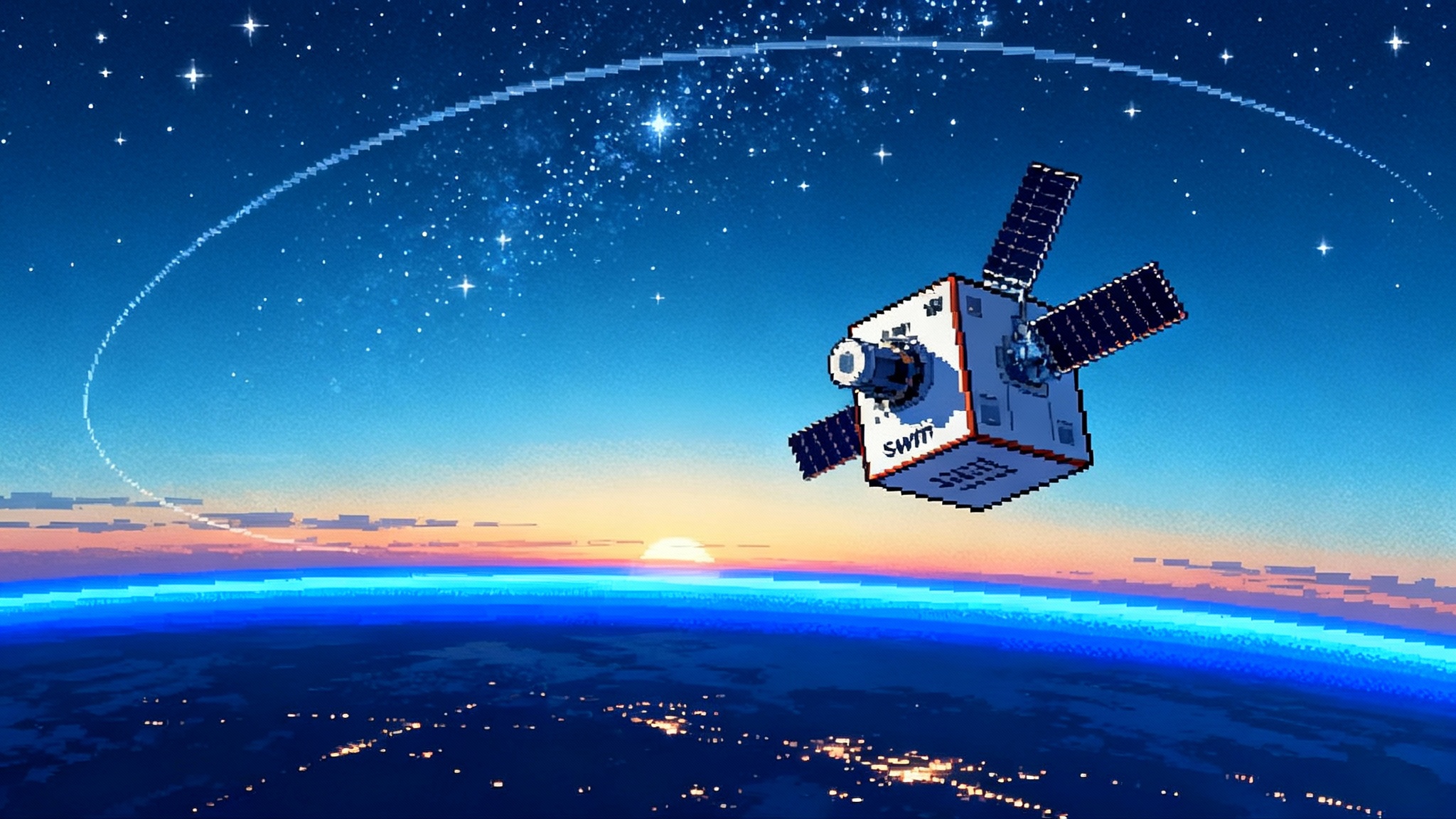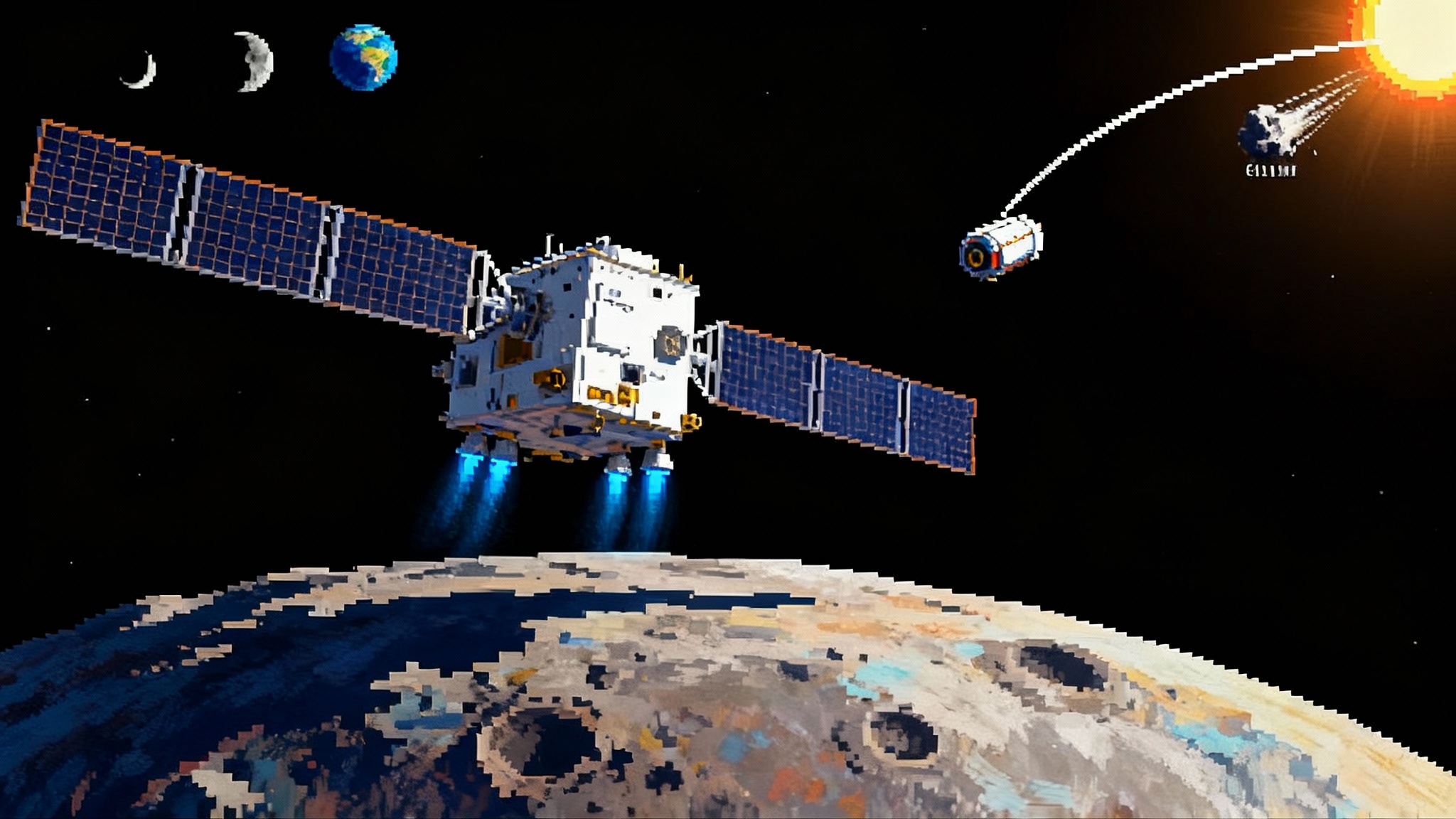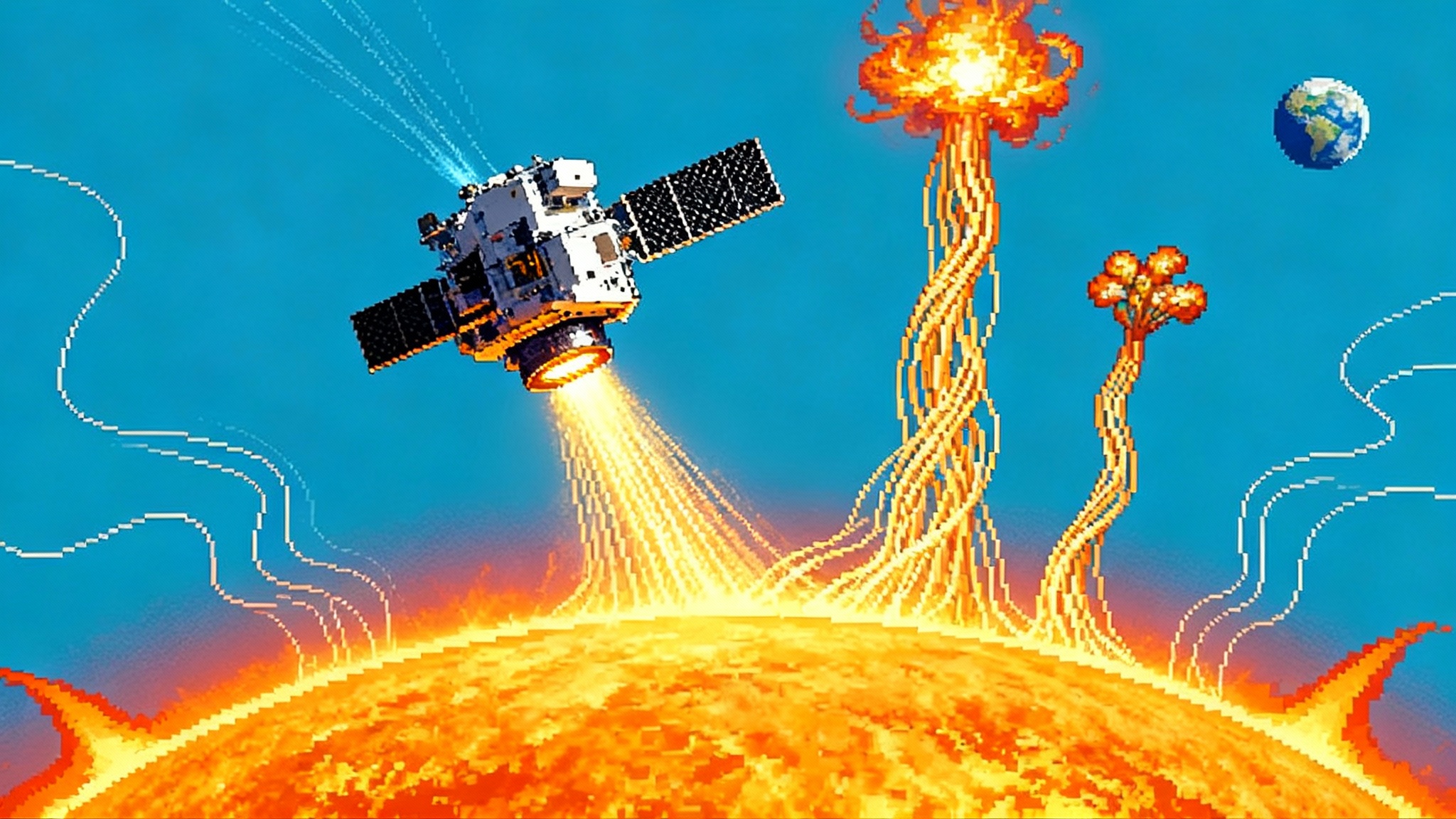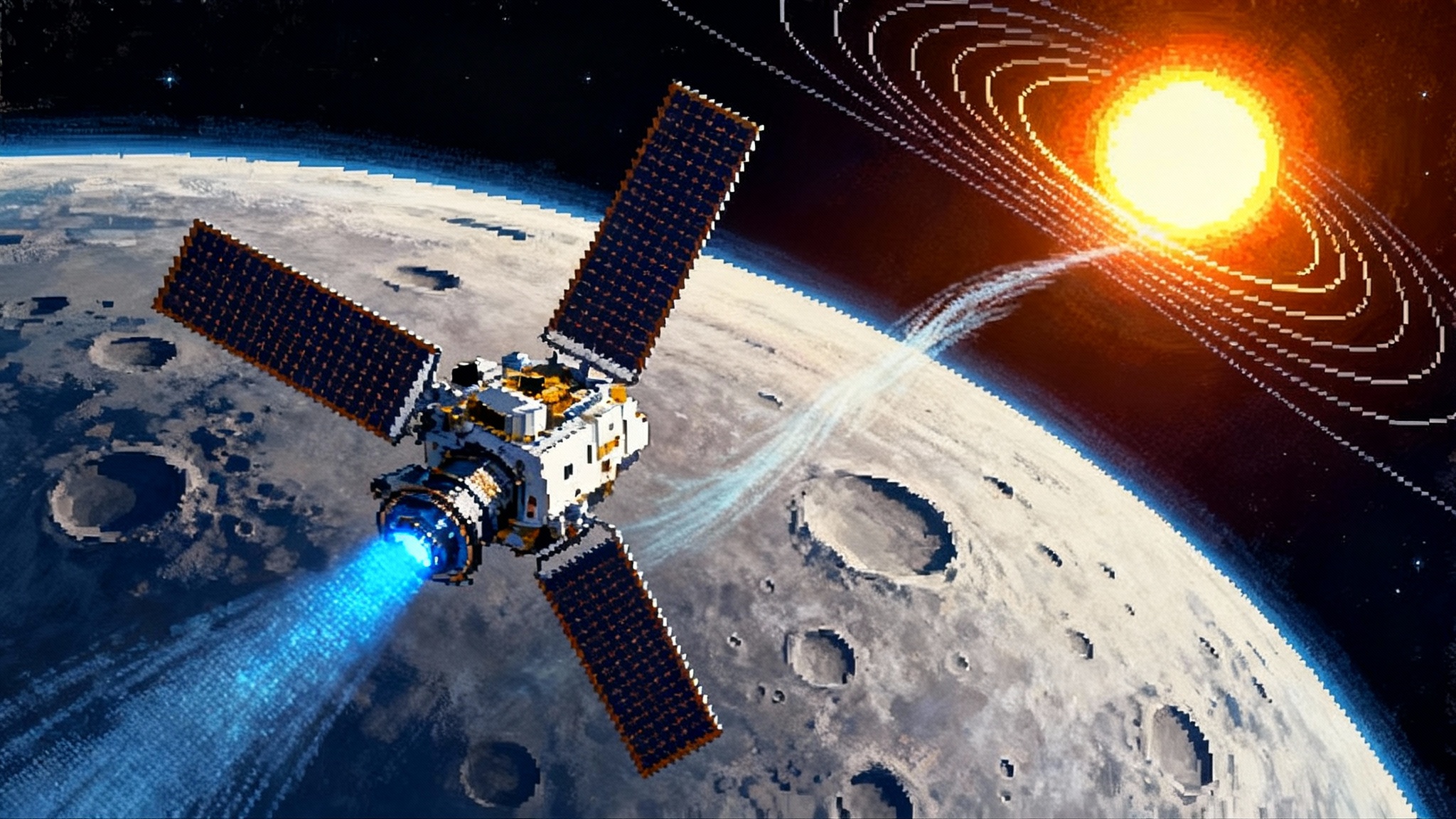3I/ATLAS at Mars: The Interstellar Sprint We Must Catch
On October 3, 2025, the interstellar comet 3I/ATLAS makes a rare pass by Mars. Here is what telescopes are racing to learn now—and the four concrete steps space agencies should lock in before the next one appears.

Breaking: An interstellar visitor is sprinting past Mars
On October 3, 2025, a comet from another star system will skim past Mars. Telescopes and spacecraft across the Solar System are already leaning in: the Hubble Space Telescope, the James Webb Space Telescope, the new Spectro-Photometer for the History of the Universe, Epoch of Reionization and Ices Explorer, Mars orbiters, even surface rovers. The target is 3I/ATLAS, only the third confirmed interstellar object ever seen. It is moving on a hyperbolic track that guarantees a one-way ticket out. NASA’s public briefings set the pace and the stakes, including size constraints, planned observations, and the Mars and Jupiter opportunities that bracket this fleeting season of discovery. See the latest baseline on NASA’s 3I/ATLAS overview.
If ʻOumuamua in 2017 was a surprise knock on the door, and comet Borisov in 2019 was a quick hello through the window, 3I/ATLAS is a guest who steps onto the front porch. It will pass behind the Sun at the end of October, then reappear in early December for another round of scrutiny before it accelerates toward the cold and quiet beyond Jupiter in March 2026. The clock is loud. Every hour we capture now is data we will never get again.
What we are learning in real time
Even with extraordinary attention, scientists are still measuring the basics. Hubble imagery shows a teardrop cocoon of dust around a small, bright core, consistent with an active comet that is shedding gas and ice. Early size limits suggest a nucleus somewhere between a few hundred meters and several kilometers across, a wide range that reflects how hard it is to separate a compact, sunlit nucleus from the dust coma that surrounds it. Webb’s infrared spectra are probing the ices and dust grains themselves, looking for fingerprints of water, carbon dioxide, and more exotic volatiles. SPHEREx, designed to map the sky in near-infrared light, is acquiring spectra during this window to add sensitivity at shorter wavelengths.
Mars is the ace up our sleeve. The planet sits close to the comet’s path, so orbiters like NASA’s Mars Reconnaissance Orbiter and ESA’s ExoMars Trace Gas Orbiter, and even surface rovers with upward-looking cameras, can try to spot the comet from a vantage point that no Earth telescope can match. The geometry is unusual, like filming a race car from a bridge rather than a distant grandstand. If we catch 3I/ATLAS from Mars, we can refine its brightness and tail structure without the interference of Earth’s atmosphere.
Why all the fuss for a faint smudge many amateurs will never see in backyard telescopes? Because interstellar visitors are time capsules from other suns. They formed in distant planetary systems, then were kicked out by gravitational scrums long ago. Each piece of their composition, each pattern in their dust, tells us about chemistry and planet formation beyond our neighborhood. 3I/ATLAS may be the best interstellar comet we get to study for years, or until the Rubin Observatory’s survey finds dozens more. For how that alert stream will change discovery, see Rubin LSST alerts will turbocharge discovery.
The lesson so far: speed beats cleverness
The story of 3I/ATLAS is less about one comet and more about muscle memory. When the alert hit in July, teams raced to book telescope time and assemble observing scripts. The quick response was admirable, yet it depended on ad hoc heroics, individual goodwill, and late-night spreadsheets. A few hard truths emerged:
- The best early data came from assets that can slew quickly and that already have flexible scheduling and data pipelines. Hubble and Webb can pivot, but they compete with hundreds of other high-value programs. The same is true for national facilities on the ground.
- Mars assets represent a unique vantage point, yet they were not designed as comet chasers, and commanding them to look up is a nontrivial engineering task against busy science timelines.
- The discovery to close-approach window was months, not years. That is too short for any launch from Earth to catch the comet, even with extreme propulsion. If you are not already in space or in line of sight, you miss the shot.
In other words, the next interstellar visitor will reward whoever can move first, not whoever writes the cleverest paper. We need a playbook that turns discovery into observations and, when possible, into a spacecraft flyby, in days rather than months.
Build the rapid-response playbook now
Here is a concrete, four-part plan that agencies could institutionalize before the next object appears:
- Automated discovery alerts that cascade into pre-vetted observation scripts
- What to do: Expand the current Minor Planet Center notice system into an interstellar alert channel that pushes automated triggers to partner observatories and spacecraft operations teams within minutes when an orbit is flagged as hyperbolic.
- Why it matters: Minutes translate into better ephemerides within hours, which unlocks narrower instrument slits and sharper images in the first days when the object is still far and faint.
- How to do it: Pre-approve observing templates for the top dozen assets, from small robotic telescopes to Hubble and Webb, so staff can load rather than design new scripts. Tie the triggers to confidence thresholds in orbit fitting, so we do not cry wolf.
- Cross-fleet slews on a shared timeline
- What to do: Treat the Solar System like a distributed observatory. When a trigger fires, a central schedule should coordinate a rolling cadence that alternates ultraviolet, visible, and infrared coverage across space and ground, plus a separate Mars or Venus vantage if geometry allows.
- Why it matters: Multiwavelength coverage reveals composition and dust physics, while different viewpoints reveal tail structure and coma asymmetries. Coordinated timing prevents redundant data and fills gaps.
- How to do it: Pre-allocate an interstellar reserve, a small percentage of time on flagship telescopes and key spacecraft that can be claimed instantly by the alert team for the first 30 days, then extended at weekly reviews. For an example of how operational data can reshape planning, see Parker's 2025 data will rewire space ops.
- A ready-to-launch interceptor that can leave within weeks
- What to do: Pair Europe’s in-development Comet Interceptor with a United States quick-launch partner, ideally a microsatellite class bus with a compact imager and spectrometer, staged on short-notice rideshare or stored as flight-ready hardware.
- Why it matters: 3I/ATLAS shows that discovery to best-geometry can be measured in months. If an interceptor is already at the Sun-Earth L2 point, or if its bus is sitting on a pad with a booked fairing slot, a flyby becomes feasible for the right geometry.
- How to do it: Fund a standing line that keeps one flight unit in storage and one in build, with propulsion options suited for rapid transfers, for example solar electric propulsion or high-thrust chemical stages. Align this with ESA’s Comet Interceptor mission, which is designed to sprint once a suitable target appears. A small American chaser could add different instruments and risk posture, while the European craft maintains the baseline.
- One data standard, one open pipeline, zero friction
- What to do: Agree on a minimal interstellar object data package, from pointing and calibration to quick-look spectra, that all teams push within 24 hours to a shared archive with proper credits.
- Why it matters: A single repository reduces duplication and speeds cross-checks of early claims. It also lets small teams with clever models contribute immediately.
- How to do it: Clone what worked for planetary defense testing, including clear embargo rules and citation norms, but bias toward rapid release since the window is brief and nonrepeatable.
Why an interceptor changes everything
A flyby transforms our understanding from guesses to geology. Remote spectra can tell us that carbon dioxide is present, but a few hundred kilometers up close, you can measure jets as they fire, map boulders, and sample dust grain sizes directly. The European mission is explicitly designed to wait at the Sun-Earth L2 point and pounce when a pristine comet or interstellar object is found. The trick is minimizing the time between selection and departure, which the mission addresses by being in the right orbit with propulsion, sensors, and a pair of deployable probes ready to separate and bracket the target.
Matching that approach with a nimble American partner would create redundancy and complementary views. Think of two cyclists pacing a sprinter from opposite sides of the track, one carrying a high resolution camera, the other a multiband spectrometer. If one has to hold off due to risk or geometry, the other still delivers a baseline dataset. If both make the pass, we get stereo imaging and multipoint sampling through the coma. 3I/ATLAS would be a stretch even for a spacecraft already at L2, but it shows why being parked and ready is the only credible path to intercepting the next visitor. China’s rising small-body ambitions, including Tianwen-2 launches to a quasi-moon, show how quickly this playbook could become a global norm.
The October to December campaign as a testbed
The current observation push is a live rehearsal. It is sharpening priorities we can hard-code into the playbook:
- Before solar conjunction in late October, prioritize thermal and composition spectra while the phase angle is rising, since heat-driven outgassing can reveal hidden volatiles.
- During conjunction, allocate radio and particle instruments on heliophysics missions that can watch from different angles, since some spacecraft near the Sun can keep an eye while Earth-bound telescopes cannot.
- In early December, run a second coordinated sweep with a standard layout, for example deep imaging at visible wavelengths, mid-infrared spectra, then high cadence photometry to catch rotation. Lock in Mars and possibly Jupiter-system assets for opportunistic viewing if geometry permits.
This cadence yields two comparable datasets separated by peak heating at the Sun, which turns a single snapshot into a before and after experiment. The November to March leg toward Jupiter is especially valuable for spacecraft in the outer Solar System that might catch the tail end of the show.
What success looks like in 2026
By spring we will know what kind of comet 3I/ATLAS is with far better confidence. The payoff will not just be a catalog entry. It will be a template:
- An end-to-end timeline that converts discovery into confirmed hyperbolic status, first spectra, and cross-vantage imaging within a week.
- A checklist of which instruments delivered the most decisive constraints for a faint, fast mover, so we can pre-plan their use next time.
- A telemetry and archiving workflow that lets the smallest university teams participate on equal footing with the largest observatories.
If we can deliver that template, then the next interstellar alert will not cause a scramble. It will trigger muscle memory.
Concrete steps agencies can take in the next 12 months
- Codify an interstellar object playbook at the Planetary Defense Coordination Office, with mirrored ownership at the European Space Agency. Publish it as a living technical standard for observatories and flight projects.
- Reserve a small pool of discretionary observation hours on five flagship assets, two in space and three on the ground, exclusively for interstellar targets, refreshed each quarter.
- Fund at least one flight-ready microsatellite bus with a heritage spectrometer and camera, pre-qualified for rideshare with a commercial launcher and stored with propellant on board, maintained by a small standby team.
- Build a Mars vantage kit, a tested sequence that lets orbiters and surface assets safely look up at a comet with minimal disturbance to primary missions, including pre-vetted thermal and pointing constraints.
- Run a red team tabletop exercise that tries to break the plan, starting with a hypothetical object that is fainter, faster, and on a worse geometry than 3I/ATLAS.
Each step is practical, specific, and testable. None requires a new super heavy launcher, an entirely new mission class, or a risky pivot off current priorities.
A simple metaphor for what comes next
Imagine a professional sports team that never practices last-minute drills. When a surprise play happens in a real game, they improvise. Sometimes it works, often it does not. The solution is not to recruit more superstars, it is to rehearse the final two minutes until every player knows their role by heart. For interstellar visitors, the final two minutes is the first two months after discovery. 3I/ATLAS is our scrimmage. We can win the next one by knowing the playbook and by keeping a fresh pair of shoes in the bag, a spacecraft that is literally ready to go.
The big picture without the hype
Speculation about alien origins will always follow interstellar objects, but the scientific method rewards careful, comparable measurements. The most exciting result is often that the object is a comet, full stop, because the details of that comet can rewrite parts of our chemistry textbooks. If the field can collect those details faster, with better coordination and a credible shot at an occasional flyby, then every new interstellar visitor becomes a first-contact moment with a different kind of history, not a one-week social media frenzy.
3I/ATLAS is already teaching us how to do this well. We have one link that keeps us grounded in facts, NASA’s page above. We have one mission that embodies the intercept idea, ESA’s Comet Interceptor above. We have a global fleet that can move faster with a small amount of structure. Now is the moment to write that structure down, fund the standing pieces, and practice.
When the next interstellar comet appears, and it will, the difference between a set of lovely pictures and a once-in-a-century science bonanza will come down to whether our playbook is muscle memory or a stack of last-minute emails. The comet will not wait. Neither should we.








